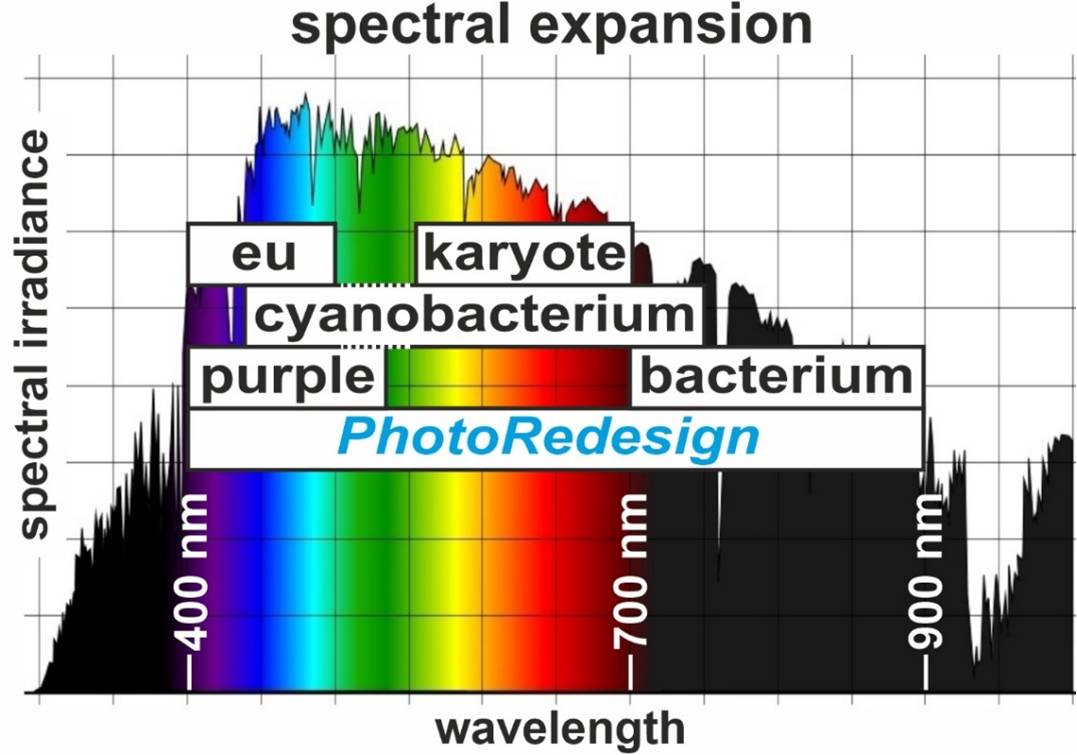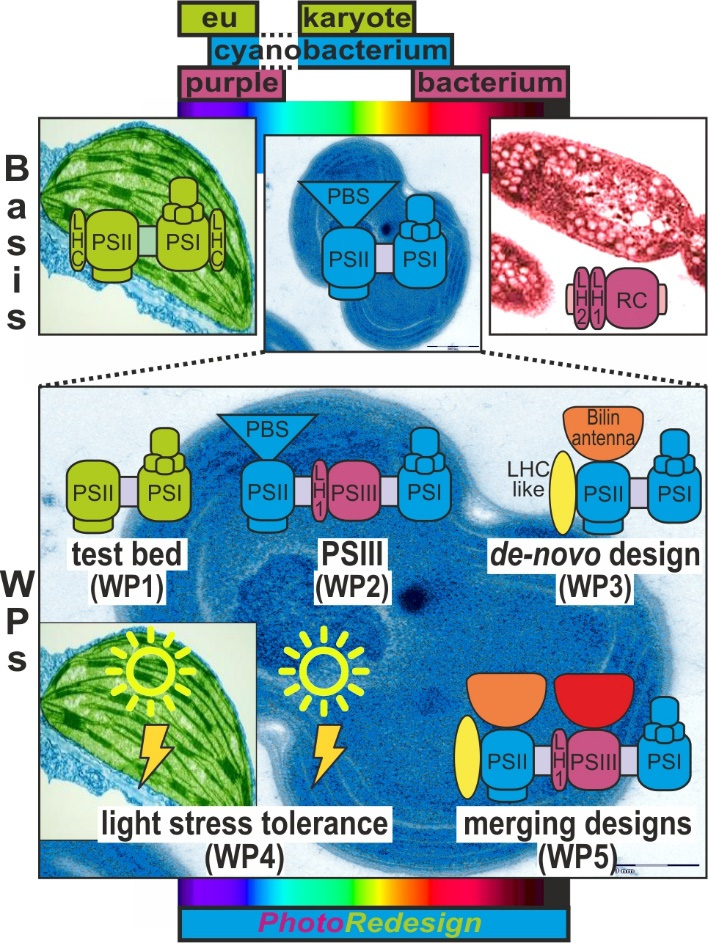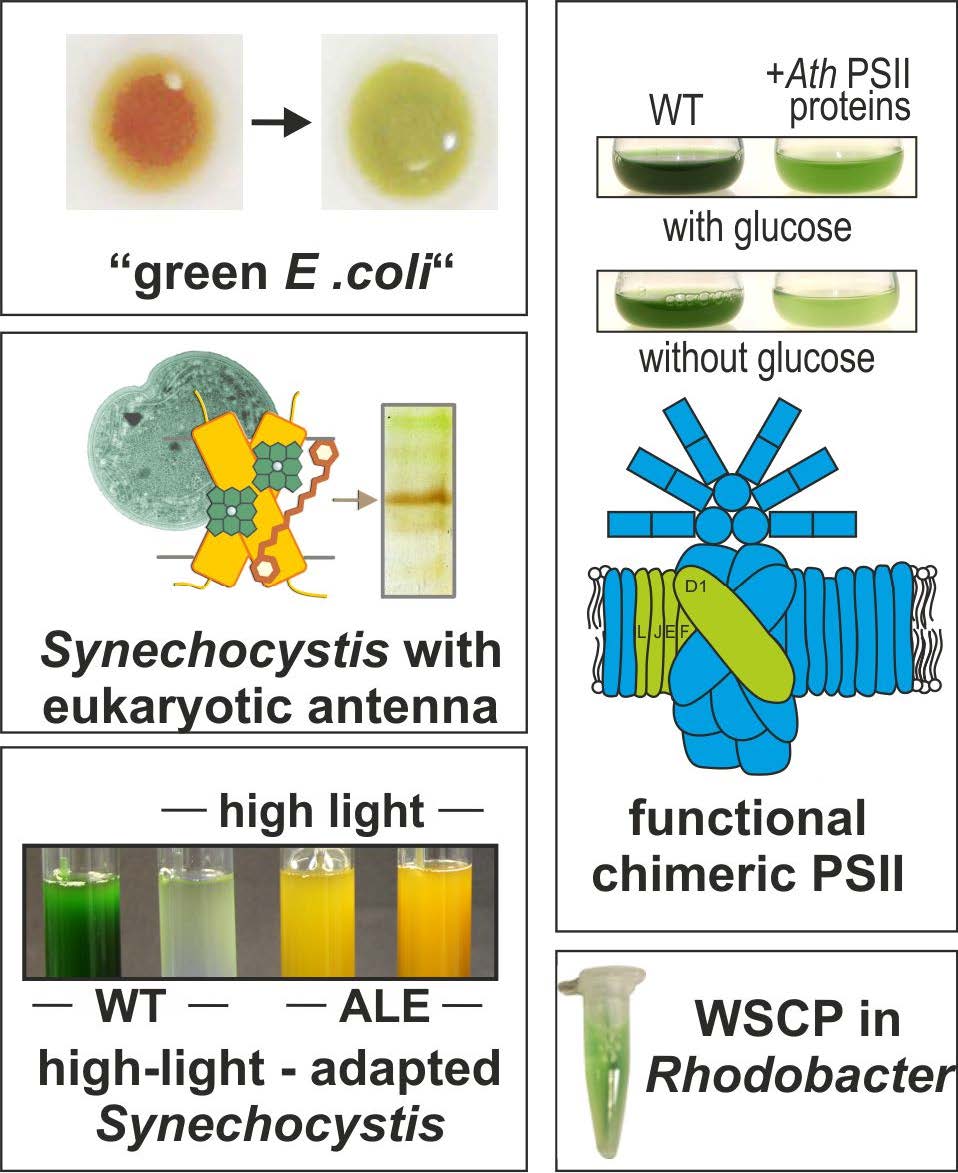Laboratory of Photosynthesis
Josef Komenda`s group
Biogenesis of Photosystem II
Research Projects
PhotoRedesign - Redesigning the Photosynthetic Light Reactions
ERC Synergy Grant 854126, 2020-2025.
Principal Investigators:
Prof. Dr. Dario Leister (coordinating PI) - Ludwig-Maximilians-Universität, Munich, Germany
Prof. Dr. Josef Komenda - Czech Academy of Sciences, Trebon, CR
Prof. Dr. C. Neil Hunter - University of Sheffield, GB
Photosynthesis is a fundamental biochemical process on Earth evolved by ancient microorganisms ~3 billion years ago to convert solar energy into chemical energy. In photosynthetic eukaryotes (algae and plants) and cyanobacteria, photosynthesis uses water as the electron donor for chemical reduction of CO2, and releases oxygen (oxygenic photosynthesis). Because it maintains the level of oxygen in the atmosphere and, directly or indirectly, provides the nutrients for nearly all life forms, oxygenic photosynthesis is vital for the survival of the biosphere. The photochemical light reactions in oxygenic photosynthesis are performed by two large protein complexes termed Photosystem I (PSI) and II (PSII) that absorb photons and use their energy to generate a proton gradient and reducing power that are used to fix CO2 in the Calvin cycle. To ensure that photosystems function at high rates, phototrophs evolved diverse light-harvesting systems (antennas) to collect and transfer photon energy to the reaction centres of the photosystems.
Although some parts of the light reactions are highly efficient, the overall efficiency of the light reactions (in terms of the fraction of incident solar energy converted into chemical energy) is only ~15% under field conditions, and only a fraction of this is then converted into biomass during CO2 fixation. Because their fundamental enhancement is not feasible by conventional approaches, there is an urgent need to develop novel concepts to redesign their light harvesting and photochemical capacity.
The overall objective of the project is designing light reactions that can harvest and safely convert energy from an expanded solar spectrum by synthetic biology and adaptive laboratory evolution, combining photosystems from different photoautotrophic organisms, and including de novo-designed antennas in reimagined photosystems.
PhotoRedesign will develop a novel concept for redesigning and enhancing complex and apparently immutable processes, bring new perspectives on improving the production of food, energy or high value compounds by organisms with enhanced variants of photosynthesis, and provide new model systems and toolkits for the next generation of photosynthesis researchers and will develop of a novel concept for enhancing hitherto immutable traits.


The ultimate goal is to combine features from different types of photosynthetic organisms (cyanobacteria, purple bacteria, plants) within the single organism. We will use the cyanobacterium Synechocystis as a living lab and synthetic biology to(re)build photosystems and antennas and adaptive laboratory evolution to optimise them. Eukaryotic photosystems (WP1), a novel photosystem PSIII (WP2), and de novo-designed antennas (WP3) will be (re)built. Increasing tolerance to light stress (WP4), and combining the outcomes of the different tasks (WP5) will result in light reactions with enhanced utilisation of solar energy.

Key achievements for enabling PhotoRedesign. All involved laboratories have already rebuilt photosynthetic modules. Chl biosynthesis was introduced into E. coli (“green E. coli”). A chimeric plant/cyanobacterial PSII was generated and the eukaryotic LIL3 antenna was introduced into Synechocystis. Further, Synechocystis was made light stress tolerant by the adaptive laboratory evolution (ALE) and plant Chl a protein (WSCP) was assembled in Rhodobacter.